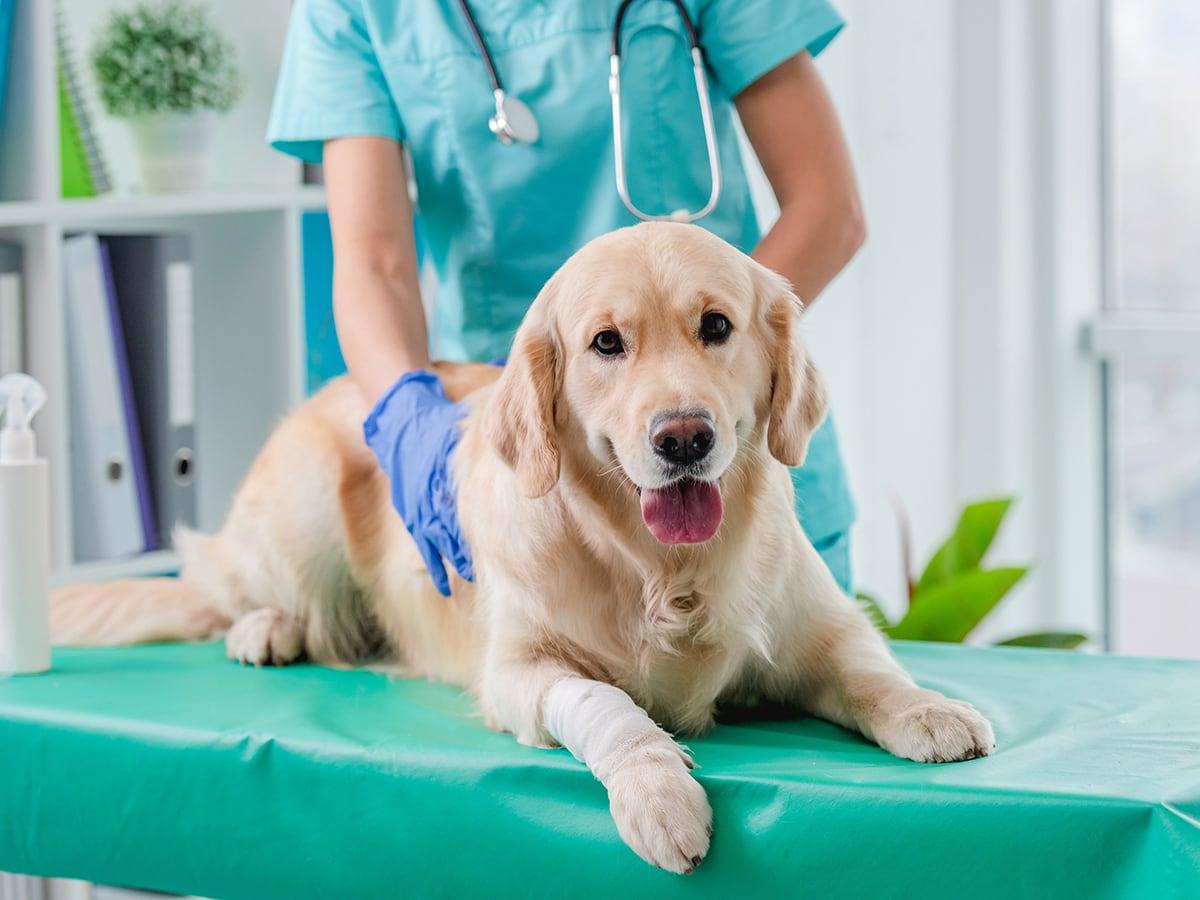A cruciate ligament injury, often referred to as an ACL tear, is a common and debilitating condition that affects many dogs, particularly larger breeds and those with a predisposition to joint problems. This injury can significantly impact a dog's mobility and quality of life, causing pain, lameness, and difficulty performing everyday activities.
Understanding the Cruciate Ligaments
The cruciate ligaments are two essential bands of fibrous tissue located within the knee joint. They play a vital role in stabilizing the knee, allowing for proper movement, and preventing excessive motion. When a cruciate ligament is injured, the knee becomes unstable, leading to pain and lameness.
Causes of Cruciate Ligament Injury
Several factors can contribute to a cruciate ligament injury in dogs. These include:
Trauma: A sudden twisting or hyperextension of the knee joint, often during strenuous activity or play, can cause a traumatic rupture of the ligament.
Degeneration: The ligament can gradually weaken over time due to factors like age, obesity, and underlying joint conditions, making it more susceptible to injury.
Genetics: Certain breeds are predisposed to cruciate ligament injuries, suggesting a genetic component.
Early Spay or Neuter: Recent studies suggest that early spaying or neutering may increase the risk of cruciate ligament injury in some dogs.
Recognizing the Symptoms
Identifying a cruciate ligament injury early is crucial for prompt treatment and a better prognosis. Common symptoms include:
Sudden lameness or limping
Difficulty rising from a sitting or lying position
Swelling in the knee joint
Pain or discomfort when the knee is touched or manipulated
Decreased activity level or reluctance to exercise
If you notice any of these symptoms in your dog, it's essential to consult your veterinarian for a proper diagnosis.
Diagnosis and Treatment Options
Veterinarians typically diagnose a cruciate ligament injury through a combination of physical examination, observing the dog's gait, and potentially using imaging techniques like X-rays to assess the joint's stability.
Treatment options vary depending on the severity of the injury, the dog's size and age, and the owner's preferences.
Conservative Management: For smaller dogs or those with mild injuries, conservative management may be an option. This includes rest, pain management, physical therapy, and potentially the use of a knee brace.
Extracapsular Repair: This involves placing a suture or artificial ligament outside the joint to stabilize the knee.
Tibial Plateau Leveling Osteotomy (TPLO): This procedure alters the angle of the tibia to reduce stress on the cruciate ligament.
Tibial Tuberosity Advancement (TTA): This surgery changes the mechanics of the knee joint to eliminate the need for a cruciate ligament.
Surgical intervention is often recommended for larger dogs or those with severe injuries. Several surgical techniques are available, each with its own advantages and considerations. These include:
Your veterinarian will discuss the most suitable surgical option for your dog based on their individual needs.
Post-Surgical Care and Recovery
Post-surgical care is critical for a successful recovery. This typically involves:
Strict rest and restricted activity
Pain management
Physical therapy and rehabilitation exercises
Weight management to reduce stress on the joint
Recovery time can vary, but it generally takes several weeks to months for a dog to regain full function of the injured leg.
Prevention Strategies
While not all cruciate ligament injuries can be prevented, there are steps you can take to reduce the risk:
Maintain a healthy weight: Obesity puts extra strain on joints, increasing the likelihood of injury.
Provide regular exercise: Controlled exercise helps keep muscles strong and joints healthy.
Avoid excessive jumping or twisting: Limit activities that put excessive stress on the knee joints.
Consider breed-specific recommendations: If you have a breed predisposed to cruciate ligament injuries, discuss preventive measures with your veterinarian.
FAQs about Cruciate Ligament Injuries in Dogs
Can a torn cruciate ligament heal itself in dogs?
Unfortunately, a completely torn cruciate ligament will not heal on its own. The knee joint will remain unstable, leading to further complications like arthritis and muscle atrophy. While some dogs may adapt to a degree, the long-term prognosis without intervention is often poor5.
Can a dog live comfortably with a torn cruciate ligament?
While some dogs may initially cope with a torn cruciate ligament, the condition tends to worsen over time, causing increasing pain and discomfort. Without treatment, the dog's quality of life will likely decline, and they may develop further joint problems1.
Can a dog recover from a torn ACL without surgery?
In some cases, particularly for smaller dogs or those with mild injuries, non-surgical options like rest, physical therapy, and bracing may be sufficient for recovery. However, surgery is often the most effective treatment, especially for larger dogs or those with severe tears4.
Conclusion
A cruciate ligament injury can be expensive and challenging for both dogs and their owners. However, with prompt diagnosis, appropriate treatment, and diligent post-surgery care, most dogs can recover successfully and enjoy a good quality of life.
If you suspect your dog may have a cruciate ligament injury, don't hesitate to seek veterinary attention. Early intervention can make a significant difference in the outcome and your dog's overall well-being.
About the Author
Dr. Alina Barland, a vet at Eagle Glen Veterinary Clinic reviewed this post. Eagle Glen Veterinary Clinic has been serving pets in LA since 1988! The vets and technicians have a passion for pet care and the skill to give excellent service! Visit https://www.instagram.com/eagleglen.vc/ or https://eagleglenvets.com/index.cfm for more.

With 10 years of experience as a pet parent, I aim to empower pet owners with insights into pet insurance and maintaining their pet's well-being. I aspire to be a trusted source, combining knowledge with a commitment to the welfare of our beloved pets.

Eagle Glen Veterinary Clinic has been serving pets in LA since 1988! The vets and technicians have a passion for pet care and the skill to give excellent service! Visit https://www.instagram.com/eagleglen.vc/ or https://eagleglenvets.com/index.cfm for more.
Can a Dog Live with a Cruciate Ligament Tear? (n.d.). In Wisconsin Veterinary Orthopedics. Retrieved August 29, 2024, from https://www.wisconsinveterinaryorthopedics.com/can-a-dog-live-with-a-cruciate-ligament-tear
Cruciate Ligament Injury in Dogs. (2021). In Symptoms & Treatment. https://www.embracepetinsurance.com/health/cruciate-ligament-injury
Cruciate Ligament Rupture in Dogs. (n.d.). In VCA Animal Hospitals. Retrieved August 29, 2024, from https://vcahospitals.com/know-your-pet/cruciate-ligament-rupture-in-dogs
Pratt, J. (2022). Can a Dog Recover from an ACL Tear Without Surgery. In Walkin’ Pets Blog. https://www.walkinpets.com/blog/can-a-dog-recover-from-an-acl-tear-without-surgery
Ruptured ACL in Dogs. (n.d.). In Valley Animal Hospital of Merced. Retrieved August 29, 2024, from https://valleyanimalmerced.com/news/ruptured-anterior-or-cranial-cruciate-ligament-acl-in-dogs
Symptoms of ACL Injuries in Dogs & How They Are Treated. (2023). In www.southwiltonvet.com. https://www.southwiltonvet.com/site/blog-fairfield-county-vet/2023/09/15/pet-surgery












